
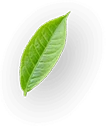
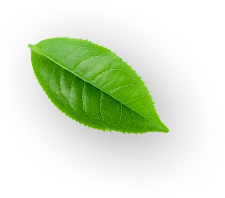
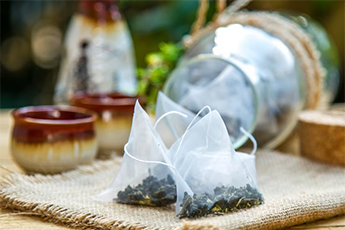
In 1907, American tea merchant Thomas Sullivan began distributing samples of his tea in small bags of silk with a drawstring.
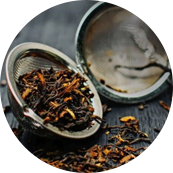
The tea leaves are packaged loosely in a canister, paper bag, or other container such as a tea chest.
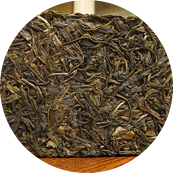
Compressed tea (such as pu-erh) is produced for convenience in transport, storage, and ageing. It can usually be stored longer without spoilage than loose leaf tea.

"Instant tea", similar to freeze-dried instant coffee and an alternative to brewed tea, can be consumed either hot or cold.

In 1907, American tea merchant Thomas Sullivan began distributing samples of his tea in small bags of silk with a drawstring. Consumers noticed they could simply leave the tea in the bag and reuse it with fresh tea. However, the potential of this distribution and packaging method would not be fully realised until later. During World War II, tea was rationed in the United Kingdom. In 1953, after rationing in the UK ended, Yorkshire-based tea manufacturer Tetley launched the tea bag in the UK, and it was an immediate success.
The "pyramid tea bag" (or sachet), introduced by Lipton[98] and PG Tips/Scottish Blend in 1996,[99] attempts to address one of the connoisseurs' arguments against paper tea bags by way of its three-dimensional tetrahedron shape, which allows more room for tea leaves to expand while steeping.[citation needed][100] However, some types of pyramid tea bags have been criticised as being environmentally unfriendly, since their synthetic material is not as biodegradable as loose tea leaves and paper tea bags.[101]
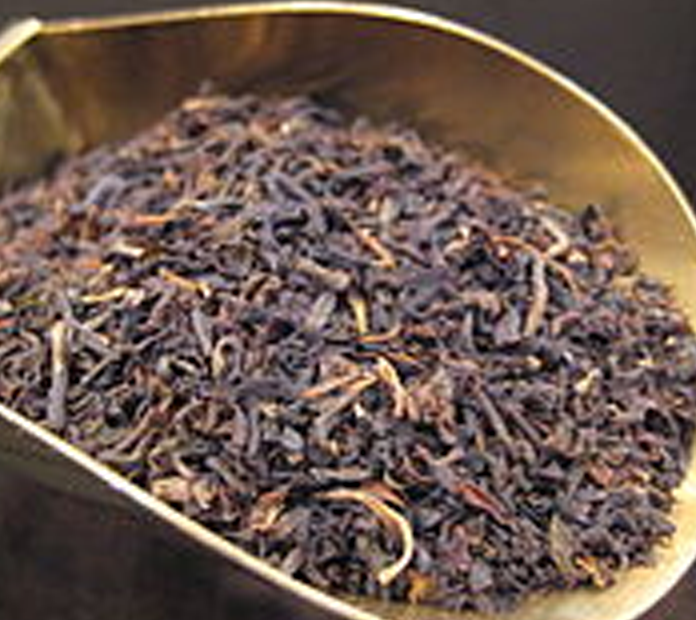
The tea leaves are packaged loosely in a canister, paper bag, or other container such as a tea chest. Some whole teas, such as rolled gunpowder tea leaves, which resist crumbling, are vacuum-packed for freshness in aluminised packaging for storage and retail. The loose tea is individually measured for use, allowing for flexibility and flavour control at the expense of convenience. Strainers, tea balls, tea presses, filtered teapots, and infusion bags prevent loose leaves from floating in the tea and over-brewing. A traditional method uses a three-piece lidded teacup called a gaiwan, the lid of which is tilted to decant the tea into a different cup for consumption.
Compressed tea (such as pu-erh) is produced for convenience in transport, storage, and ageing. It can usually be stored longer without spoilage than loose leaf tea. Compressed tea is prepared by loosening leaves from the cake using a small knife, and steeping the extracted pieces in water. During the Tang dynasty, as described by Lu Yu, compressed tea was ground into a powder, combined with hot water, and ladled into bowls, resulting in a "frothy" mixture.[102] In the Song dynasty, the tea powder would instead be whisked with hot water in the bowl. Although no longer practiced in China today,
"Instant tea", similar to freeze-dried instant coffee and an alternative to brewed tea, can be consumed either hot or cold. Instant tea was developed in the 1930s, with Nestlé introducing the first commercial product in 1946, while Redi-Tea debuted instant iced tea in 1953. Additives such as chai, vanilla, honey or fruit, are popular, as is powdered milk.
During the Second World War British and Canadian soldiers were issued an instant tea known as "compo" in their composite ration packs. These blocks of instant tea, powdered milk, and sugar were not always well received. As Royal Canadian Artillery Gunner, George C Blackburn observed:

Tea is the second most consumed beverage on Earth, after water. In many cultures it is consumed at elevated social events, such as the tea party. Tea ceremonies have arisen in different cultures, such as the Chinese and Japanese traditions, each of which employs certain techniques and ritualised protocol of brewing and serving tea for enjoyment in a refined setting. One form of Chinese tea ceremony is the Gongfu tea ceremony, which typically uses small Yixing clay teapots and oolong tea.
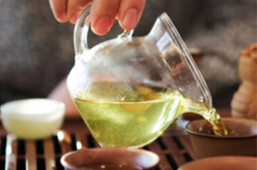
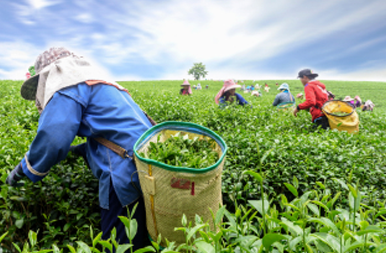
Tea is the second most consumed beverage on Earth, after water. In many cultures it is consumed at elevated social events, such as the tea party. Tea ceremonies have arisen in different cultures, such as the Chinese and Japanese traditions, each of which employs certain techniques and ritualised protocol of brewing and serving tea for enjoyment in a refined setting. One form of Chinese tea ceremony is the Gongfu tea ceremony, which typically uses small Yixing clay teapots and oolong tea.